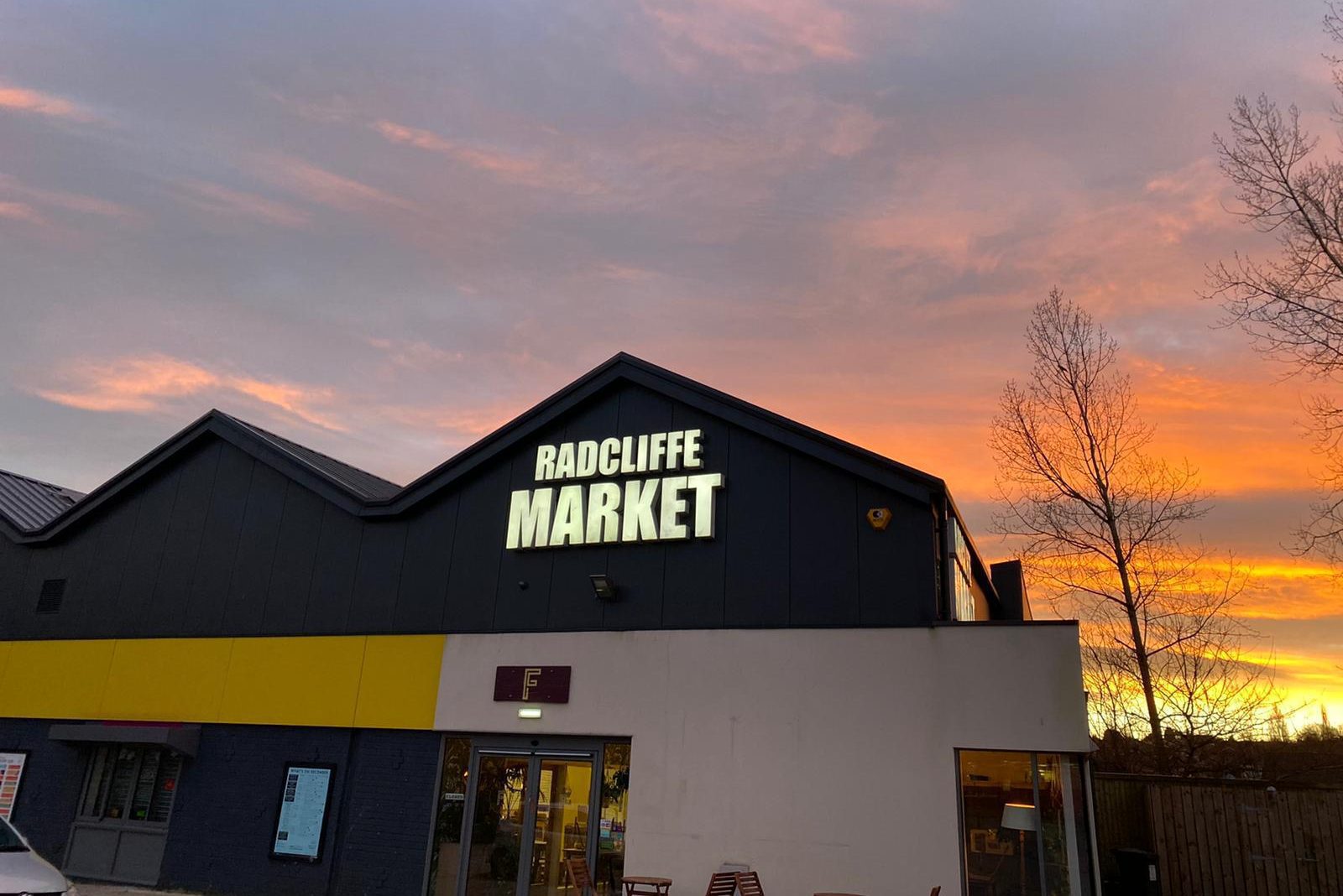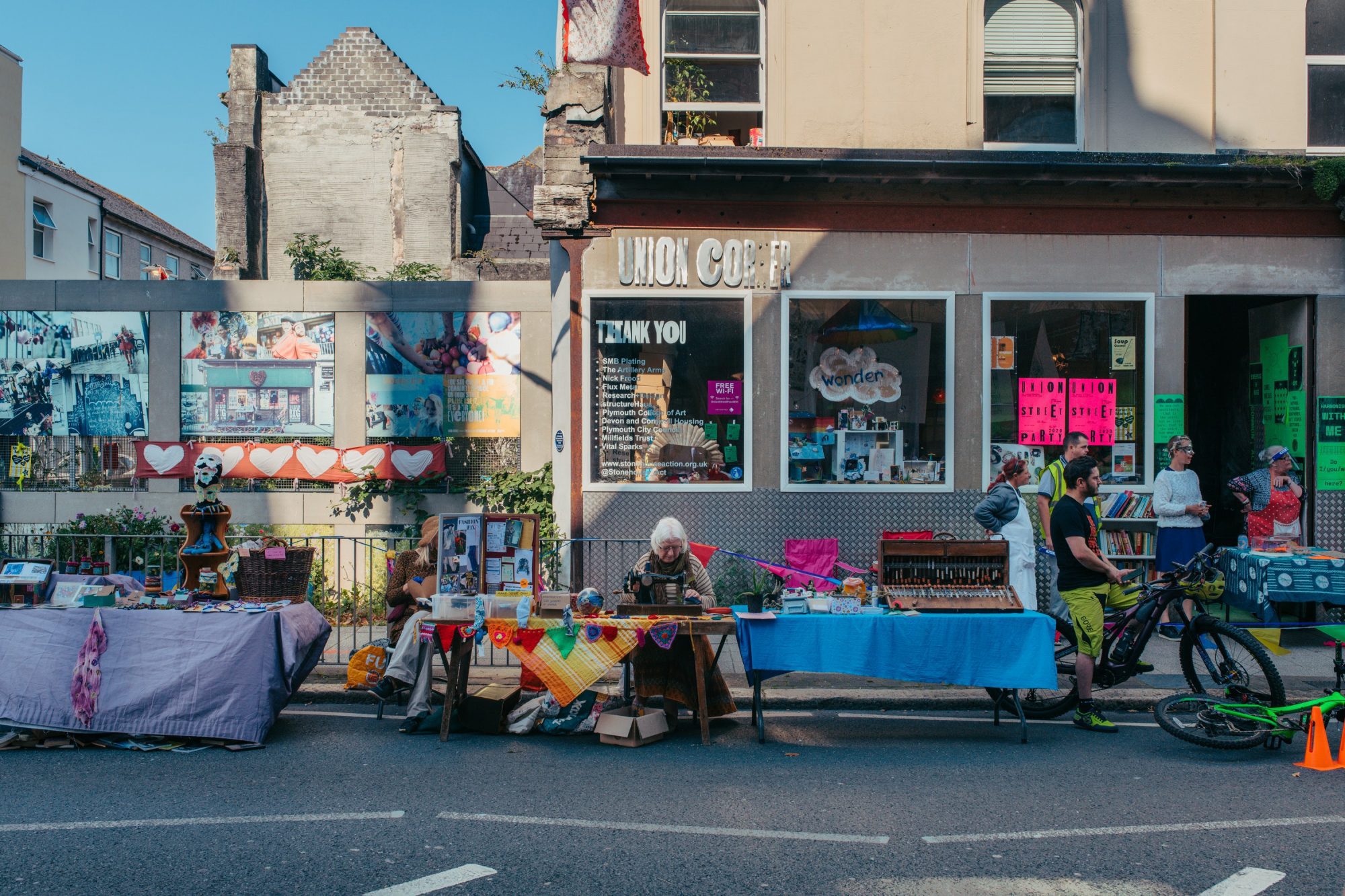- New report reveals how tackling fragmented and remote property ownership vital to future of town centres
- Survey calls for public to help identify empty buildings blighting their neighbourhoods
Local community access and ownership of key buildings on the UK’s thousands of high streets could be pivotal to their future survival according to a new report commissioned by independent trust Power to Change.
Saving the High Street: the community takeover by the London School of Economics and Political Science, reveals how fragmented property ownership; a lack of transparency on who owns high street buildings; and absentee landlords with no vested interest in local places, are a barrier to creating unified high street regeneration strategies that can address the increasing number of buildings sitting empty.
The report, which explores how community businesses can help revive the high street’s fortunes, also showed that where local authorities have helped facilitate community business ownership and access to both public and privately-owned buildings, it has created more vibrant and resilient high streets.
The research also revealed that economically, community businesses deliver what high streets and local people need. Run by local people who understand their communities, they offer diverse and distinctive services tailored to local requirements. This localism brings a stability to a high street that contrasts with remote corporate businesses more inclined to pull out of areas when business models stop working.
The report calls on local authorities and statutory funders to do more to support community businesses to grow their presence on high streets.
It argues that promoting greater ownership will help secure the high street’s future by making it more diverse and less reliant on remote corporate retail organisations. To do that local authorities need to:
- Connect community businesses with vacant properties on the high street
- Ease the asset transfer process
- Support ‘meanwhile use’ of buildings and management leases of high street assets directly to trusted community businesses
- Provide leases which are secured, or which start at a low level and scale up gradually, giving community business the space to grow and become financially sustainable.
Vidhya Alakeson, CEO of independent trust Power to Change, said: “Whilst changing retail habits may have kick-started the decline of our high streets, it is the underlying issue of fragmented property ownership and disengaged remote landlords that in the end will choke the life from them if we don’t act now.
“Community ownership is vital to the revival of the high street. Communities not only care passionately about their local area, more importantly they understand the needs of local people and provide distinctive services that meet local needs. This new research shows what can be achieved when local authorities get behind communities and help local people to take ownership over their high street buildings. The results are stable, sustainable and thriving town centres that are in the best possible shape to deal with any future crisis.”
Six thriving ‘destinations’
The research identified that many community businesses operate from former municipal or community buildings within a local area, including old town halls, libraries, pubs, churches and swimming pools. These buildings are often those that make a place distinctive and therefore community businesses have the unique ability to create ‘destination places’ that draw people back to the high street and help to increase footfall.
The report explored the role of community businesses in the regeneration of six locations across England and Scotland:
- The Old Library in Bodmin, Cornwall – where a significant local building has been used by a community business as a cultural facility, drawing visitors to the high street.
- Midsteeple Quarter, Dumfries – a community-led initiative which is developing a group of high street buildings into a live/work quarter
- Made in Ashford, Kent – an independent shop which provides a platform for local business to sell on the high street and for community-based craft activities
- Hebden Bridge Town Centre, West Yorkshire – a town with a thriving high street, with multiple community businesses supported by the local authority through their ‘community anchors’ policy
- Radcliffe Market Hall in Bury, Greater Manchester – a rejuvenated market hall, combining a traditional market with an evening dine-in street food and community venue
- Ultimate Picture Palace in Cowley, Oxford – where members of the local community are trying to bring an independent cinema into community ownership.
In each destination, community businesses played a pivotal role in helping to create a place that is distinctive and which offers people a more diverse mix of services including meeting spaces, health & well-being activities, cultural offerings, homes and business spaces, as well as retail.
“Created by local people to meet their needs, community businesses are inherently distinctive to their local areas. And it is that special character and the services they provide which makes them a destination. When strategically positioned on a high street, community businesses can act as an anchor to a place, from which other businesses benefit. People coming to a community business for a well-being class could afterwards stop for a coffee at a local independent café and pick up some ingredients for dinner. The result is a business eco-system that benefits everyone,” added Vidhya.
Left Empty
#LeftEmpty is an investigative survey designed to help tackle the growing issue of empty buildings on UK high streets and in town centres, a problem that in many cases is holding back regeneration. By filling in just a few simple details about empty properties in their neighbourhoods, such as an address, people can help track and identify the owners of empty buildings and give local authorities greater ability to bring them back into use.
Take the survey: https://airtable.com/shrzHDCpgcH5hCA5W
What is a community business?
A community business is set up and run by the community in a particular place to address local challenges and deliver positive impact. They are accountable to and trade for the benefit of the local community and any profits generated are reinvested locally.
For more details and to view the full report, please visit www.powertochange.org.uk
LSE Report – case studies
Radcliffe Market Hall
Radcliffe Market Hall has been in operation since 1851 and on the current riverside site since 1937. It is owned by Bury Council and in 2014 the council spent £1 million refurbishing the market in an attempt to improve its image and attract more shoppers. A group of local residents and customers came together and bid for a tender to run and manage the market hall. The later-formed Radcliffe Market Hall Community Benefit Society and was awarded the contract in January 2018 for a five-year period with lease and extension options.
With a £14,000 grant from the Power to Change Bright Ideas fund, the society undertook infrastructure work to move the existing stalls in one area to clear space for the dine-in area where they host popular food nights.
By becoming a ‘destination’ place, Radcliffe Market Hall serves an important function in bringing people into the town centre, both from the local area and the wider Greater Manchester region. There is evidence of an increase in footfall on the high street, with some businesses in the area staying open later on Fridays and Saturdays to capitalise on increased visitors in town for the market hall’s food nights. Radcliffe Market Hall is rapidly becoming a crucial part of the town’s ongoing regeneration.
Activities at the market hall include:
- Speciality markets
- Food nights
- Live music
- Tai-chi
- Children’s crafts
- Open mic nights
Made in Ashford
Made in Ashford began life as a pop-up shop in 2015, filling an empty space in Ashford’s Park Mall shopping centre where start-up businesses could share the space for a low cost to test out their trade on the high street. It was so successful that a group of the Made in Ashford creatives formed Craftship Enterprise CIC and took on the shop unit on a permanent basis in 2018, providing an outlet on the high street for local creators and designers to sell their wares in a shared space, showcasing the work of some 50 local artists and craftspeople. The art and craft-based activities provided by its members are designed to improve the health and wellbeing of local people, which are paid for through commission on what each tenant sells.
The strong relationship with Ashford Borough Council has been a critical factor in its success – the council committed the initial funds to refit the shop and formally commissioned a founding member of the CIC to manage the shop. They are working on moving the enterprise to a larger space in the town centre.
The Ultimate Picture Palace
The cinema’s history dates back to 1911, when a local actor and businessman opened the East Oxford Picture Palace – Oxford’s first purpose-built cinema. The curtains closed in 1917 when the managing director was called away to fight in the First World War, remaining closed until 1974. The cinema has changed hands several times since then and was eventually bought by a local resident in 2011, who wanted ownership to be transferred to the community to protect the cinema for many years to come.
The Ultimate Picture Palace Community Benefit Society was formed in 2019 and was given preferred bidder status to buy the business. The landlord is a local charity and is supportive of the CBS. The community share issue was scheduled for 1 May 2020 but did not go ahead due to the pandemic. Once things are clearer, the CBS will aim to launch the share offer. In July they launched a crowdfunding campaign to help them through the pandemic and raised over £50,000, confirming the community’s support for the project. The cinema has played an important role in the local high street by attracting customers in to shop at other local businesses, offering discounts for local restaurants to cinemagoers.
Hebden Bridge
Hebden Bridge is a small market town that rapidly industrialised in the 18th century and became known for its weaving mills. Unlike similar former industrial towns, today Hebden Bridge’s town centre is seen as one of the most vibrant in the UK and in 2016, won Small Market Town Prize in the Great British High Street Awards.
The town has faced several challenges in over the last ten years, with three significant floods. Despite this, and as a result of an unusually high number of community businesses in the town, including several on the high street, Hebden Bridge has remained buoyant and carries few vacancies.
Dating from 1897, former Hebden Bridge Town hall now operates as a community hub run by the Hebden Bridge Community Association. It’s position, right in the centre of town makes it an anchor business and generates footfall in the area. There is also Valley Organics, a co-operative which has two shops on the high street and a community pub, The Fox and Goose. The Trades Club, a member-owned co-operative, is a music venue and social space.
A key factor in Hebden Bridge’s resilience is that Calderdale Council has actively worked to secure a future for community assets through a ‘Community Anchors’ policy. In 2010, the local authority gave Hebden Town Hall to the Hebden Bridge Community Association (HBCA), along with a grant of £60,000 and a loan of the same amount. The Town Hall now offers events space, weddings, conferences, office space for business, and a café.
Community business has clearly played an important part in building resilience in the town. For businesses in Hebden Bridge, the Covid-19 pandemic is not the first time they have had to shut shop for a significant period of time, as was the case with the floods in 2012, 2015, and 2020. The Town Hall served as a fulcrum of efforts to rebuild in each case, hosting and organising volunteers and helping the town build back.
The Old Library and Bodmin
Built in 1896, Bodmins’s Old Library is a prominent building on Bodmin’s main shopping street. Until 2017, it housed the town’s library until it was re-located to the Cornwall County Council offices to allow for investment in facilities and books – leaving the future of the old library building uncertain.
Cornwall County Council were about to put The Old Library on the market for redevelopment as flats. However, Community Interest Company intoBodmin ceased the opportunity to save the space for community and with local authority help, was able to act on it.
The Old Library found a new purpose a thriving community and culture venue and includes a café, performance space, office space, and puts on a range of cultural activities. As a result, the Library has become a destination within Bodmin, which is not seen as a major shopping destination. The Old Library now brings more people into the high street, which in turn benefits other local businesses.
Activities at The Old Library include:
- Classes and workshops – play readings, stand-up comedy and public events
- Repair room – expert volunteers helping people make repairs and learn new skills
- A film club – a community film club by Bodmin in Motion
- Theatre and music – performed by local and touring companies.
Midsteeple Quarter and Dumfries
Midsteeple Quarter is the first community-owned high street redevelopment project in the UK. Led by the Midsteeple Quarter Community Benefit Society, this multimillion-pound regeneration project for the centre of Dumfries, Scotland, is diversifying the high street by turning an underused and neglected group of high street buildings into a vibrant mix of homes, business and community spaces.
Known as ‘The Queen of the South’, its combination of industrial, commercial and residential meant Dumfries was once a vibrant, prosperous town. Whilst it still serves as the main administrative, shopping and health care centre for the region, the town centre has experienced a steady decline as people’s shopping habits change, local businesses have been priced out by high rents and people have moved away from the town centre.
The community-led regeneration of Dumfries kick started in 2007 when Dumfries and Galloway Chamber of Commerce bought an empty shop building – 100 High Street – with a £750,000 grant from the Scottish Government. It started work to provide a new cultural attraction in the town centre but when this did not reach fruition, and faced with the prospect of the building returning to an empty shop again, a group of local artists formed The Stove Network stepped in with an alternative plan, running 100 High Street as a public arts centre.
In 2011, the property was transferred to the Council free of charge and leased to The Stove as an exhibition space and third floor workspace; bringing a cultural offer back to the high street and attracting visitors.
From 100 High Street, the local community embarked on a number of regeneration projects designed to bring vacant properties in the town back into use, including more homes on the high street.
‘Midsteeple Quarter’ is an area of the high street named after the Grade A listed Midsteeple building that dominates the town centre. With funding from Dumfries and Galloway Council’s Town Centre Living Fund, the Midsteeple Quarter Community Benefit Society (CBS) was formed in 2017 to take the project forward.
Today, the eight buildings on the High Street and within the Midsteeple Quarter are owned by a mixture of public and private investors. The Oven (at 135-139 High Street) was the first building acquired by the Midsteeple Quarter project after Dumfries and Galloway Council agreed to a Community Asset Transfer of the property in November 2018.
Temporary improvements and upgrades have been made on the ground floor, providing a flexible space for community use and a pop-up shop. With £2.85 million of investment from a number of public sources and grant bodies and other commercial funding streams, plans are at an advanced stage to completely redevelop The Oven. This flagship property will consist of an enterprise centre for local businesses at street level and seven new affordable flats on the upper floors. Despite the restrictions imposed by the Covid-19 lockdown, construction work is due to start early 2021, with completion mid-2022.
If the Oven had not been transferred to Midsteeple Quarter, it almost certainly would still be empty and costing the council money, and not initiating the changes on the high street that are being witnessed now.



